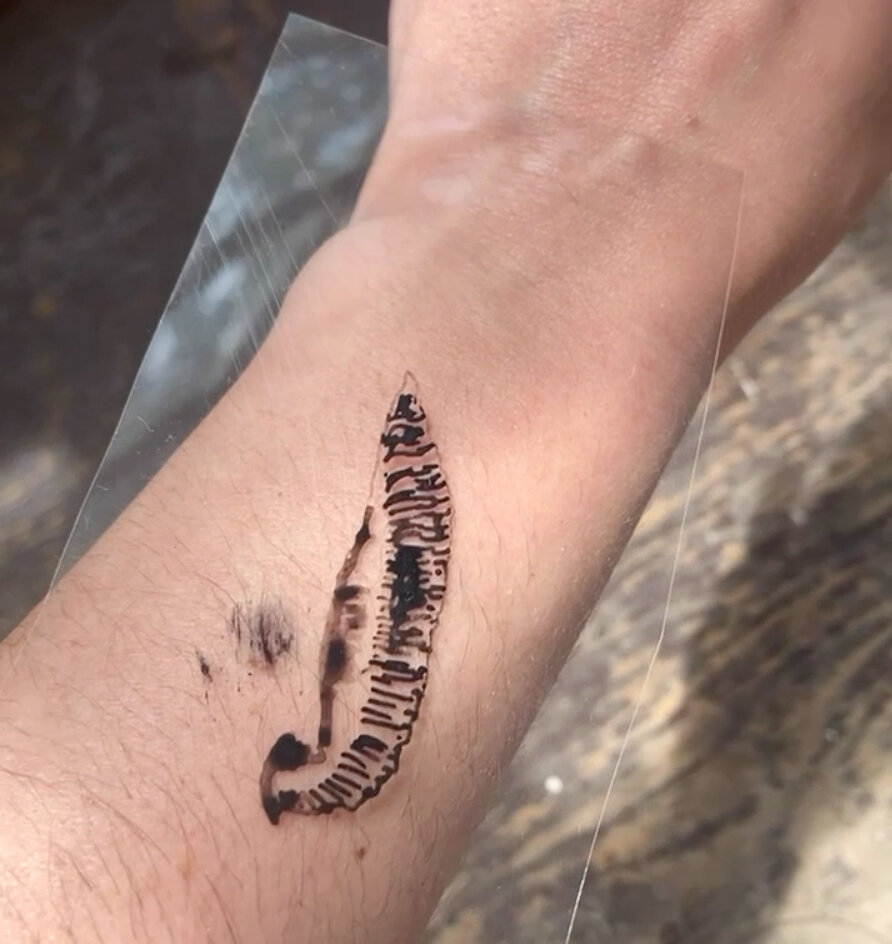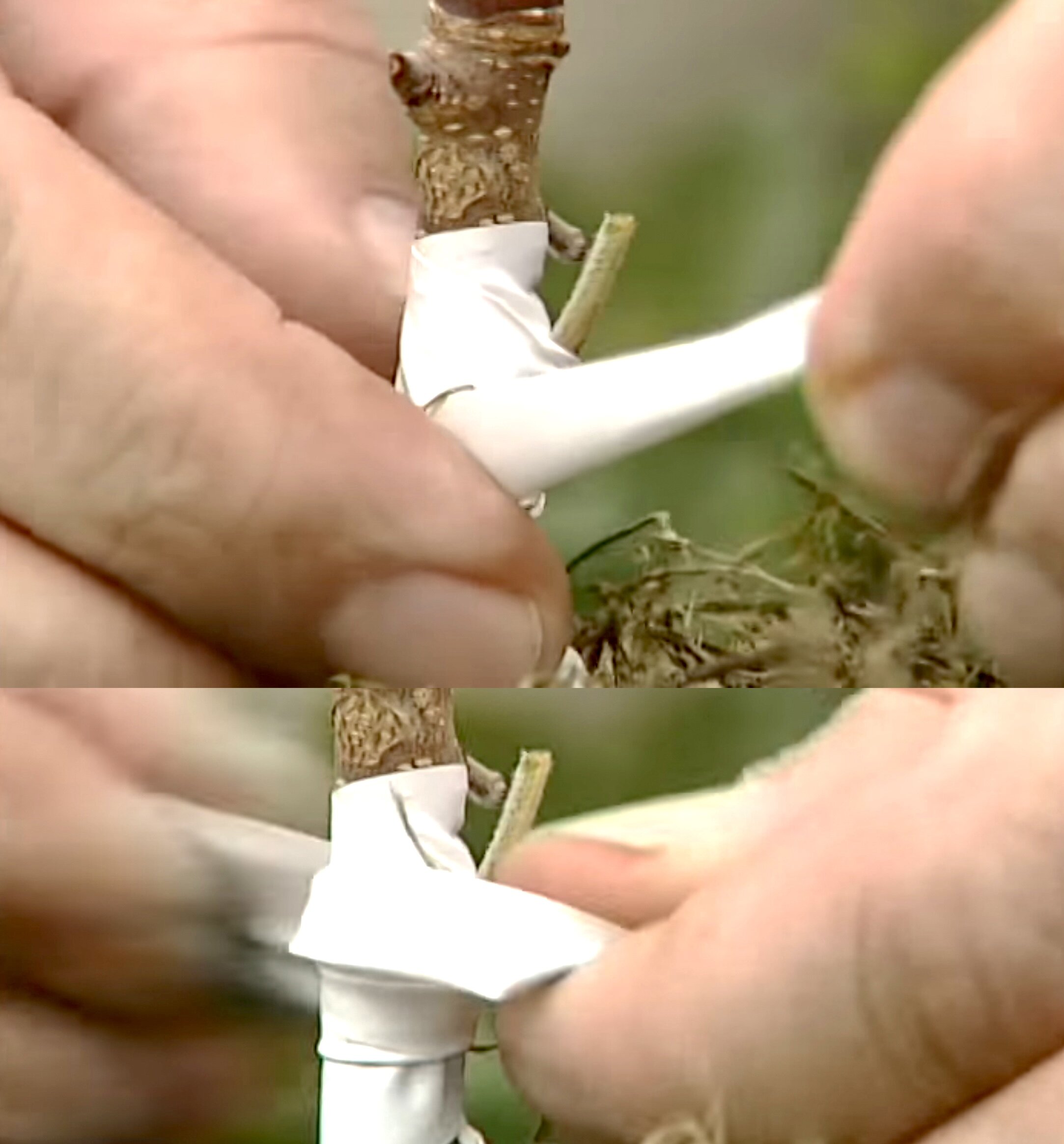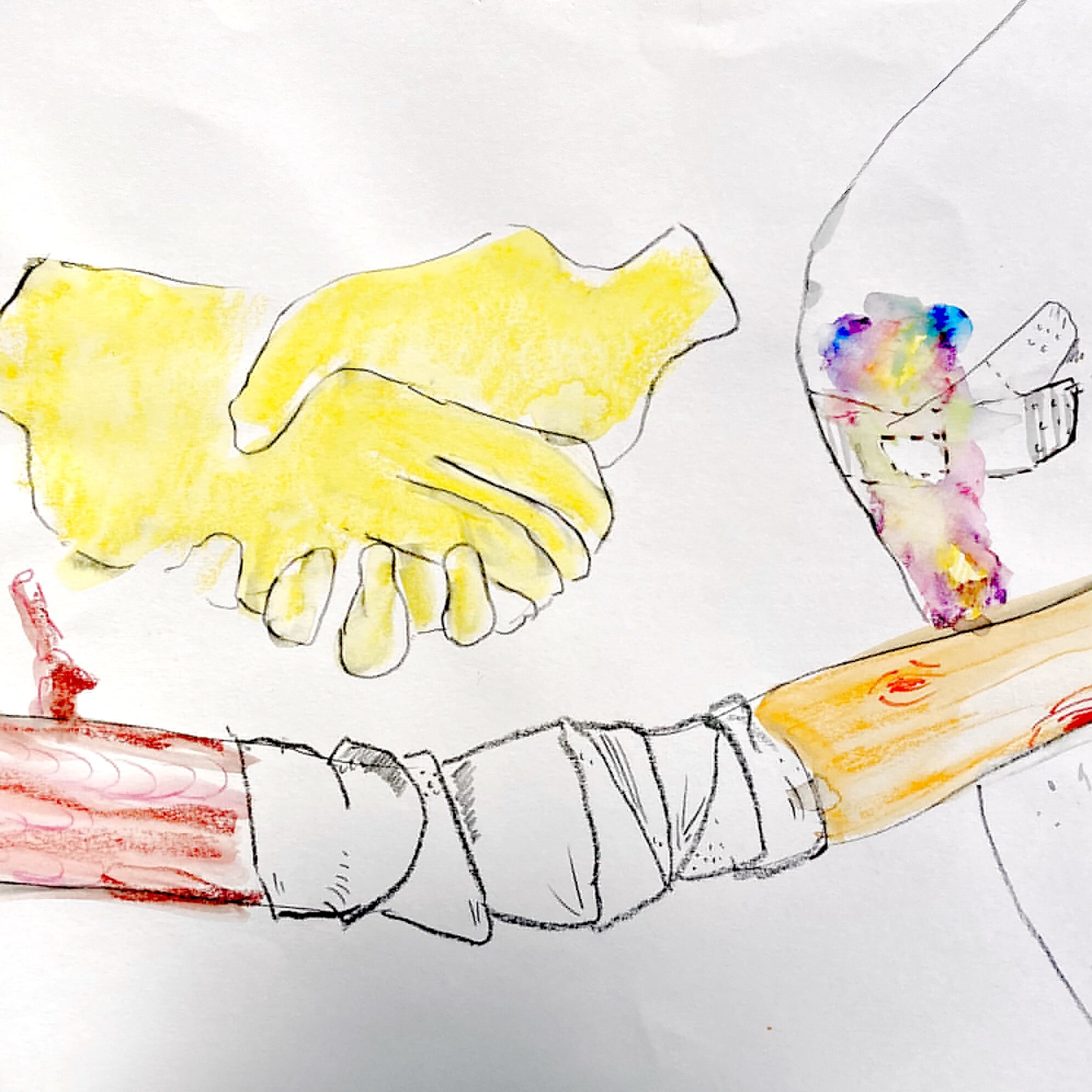Sarah Mihara Creagen | May 2021
Plant Grafting, asexual propagation, sci-fi, and our bodies:
A live SKILLSHARE and presentation
Thursday August 26th, 6:30pm EDT, free and open to all
Sarah Mihara Creagen presented a live information and skill share. This session included a hands-on plant grafting "how-to" workshop, an exploration of other forms of asexual propagation within the plant world, and a visual presentation connecting these "sci fi" gardening practices to ideas of healing and resilience within our own bodies.
Sarah explored these topics through a lens that incorporates her experiences of chronic illness, living with Crohn's Disease, and her experiences within the medical system.
This presentation touched on historical medicinal and botanical practices, useful gardening techniques, and sci-fi influences.
ASL interpretation was provided and there was an open audience Q+A.
May 31, 2021
Leeches!
Today is the last day of my Remote Research Residency with @artsassembly and @accessgallery! This month has been such a gift of time, community and mentorship. As sad as I am that it’s over, I am super excited for the upcoming RRR artists ;)
During the last few weeks of my Residency I’ve cracked open the huge / rich / uncomfortable history of the medicinal leech and bloodletting. This research has taken me into treatments for “deviant” sexual behaviour, intestinal inflammation (sounds like Crohn’s Disease to me?), heartbreak, and so many surprising twists and turns. I am obSESsed. Here is a short except from my Leech Jar animation started during the Residency, and a few fav images from my leech research!
excerpt from animation, Leech Jar, started during RRR
Leech Anatomy, Alfred Moquin-Tandon, Monographie de la famille des hirudinées (1846)
photograph, Leech on my arm
detail from A General System of Surgery in Three Parts, Lorenz Heister (1743)
May 19, 2021
I’ve been so grateful for the support and care from Access Gallery and Arts Assembly during this residency. Every Wednesday in May, Meichen Waxer has set aside time and space to be joyful and present with me in the studio, which means a lot during this wild time of upheaval in the world. She gives me the updates on her cute cats Zach and Levi, checks in about the safety and health of our near ones, and gives feedback to wherever my studio thoughts are at.
This residency has felt like an act of care.
As well, this month has given me the resources to access virtual talks, databases, workshops and virtual visits, including an upcoming virtual studio visit with a botanical professional who is currently re-designing and planting a public medicinal plant garden.
This residency has provided time and support to really delve into studio research and I’m so happy to share a few resources below related to botany and the history of plants and medicine that I’ve had with me in the studio this week.
Do you know about corpse flowers? The Amorphophallus titanum are these huge incredible, flowering plants with a body-size phallic bloom whose vegetation can grow up to 15 feet tall. The corpse flower only blooms once every 7-10 years and when it does, it emits a smell like rotting meat. Right now, (!!) there are two corpse flower plants in a Philly university greenhouse that should be coming into full bloom sometime between May 21-31, 2021. I am watching them on a live youtube stream, linked below. Once the corpse flower blooms it only lasts 24-36 hours, and it’s hard to predict when the phallic flower will emerge. On the livestream you can see how many other people are currently “watching” the plant with you, which I love. >>> info here
I am also currently watching Ruth Goodwin’s series, Victorian Pharmacy. Here is a link to the first episode, The Hazardous Healthcare of the Victorians. Goodwin is described on the 4 part BBC series from 2010 as a social and domestic historian. It’s a totally fun and informative presentation of health techniques and treatments from 19th Century England, and the cross over between early chemistry, alchemy, and the natural world.
I was able to attend a virtual lecture this week at the New York Botanical Gardens given by Carolyn Roberts called Medicine, Knowledge, and Power in the Atlantic Slave Trade.
It was amazing.
Carolyn Roberts (history professor at Yale) explores themes of race and slavery, migrant ethnobotany, and racist structures found within early emergent studies of science and the study of medicine (which stems from history and knowledge of medicinal plants). She thinks about narratives, who creates them, and how this ties into our histories of plants and medicine. >>> info here
The NYBG archives and presents its webinars here, so hopefully this one makes it to the platform soon! >>> info here
Another NYBG webinar you can currently stream for free on this platform that I really enjoyed was Queering Botanical Science: A Discussion in Celebration of LGBTQ+ Pride Month, June 26, 2020. This panel spider-webbed for me into explorations of Queer plant histories, Queer botanists, and books to add to my reading list for this month including Radical Botany: Plants and Speculative Fiction. Here’s a direct link to the lecture below.
A friend has directed me to an organization called Herban Cura. They identify as an Indigenous, Black, Queer, and Trans centered organization that focuses on education, herbs and community. They have scholarships available for Black, Indigenous & People of Color to access their courses and workshops by emailing Herban Cura directly. Their ig is linked below, with info on upcoming workshops and talks.
May 10, 2021
I’m thinking about grafting, piecing together, taking apart and sewing back up, something new. This year, my body has changed with Crohn’s. Some things visible, some things invisible, some things tied together and holding with little knots and sutures.
Grafting, my manuals are teaching me a lot of techniques. The language is a mix of surgical and magical when talking about the healing and regeneration process. “A type of propagation in which two separate plants are joined together…The two parts will eventually function as one plant”. Making a cut / splicing / keeping the wound moist / wrapping the new union tightly while it heals. I love a home how-to tutorial.
Looking forward to a deep dive into histories of illness and healing practices found within plants and nature. During my May 2021 Remote Research Residency I’ll also be learning more about how leeches were used within early medical practices, and how these topics relate to my own Queerness, experiences with Crohn’s Disease and relationship with chronic illness. And If you have IBD hit me up, I’m excited to connect with you <3
May 2nd, 2021
May 2nd, 2021, For the last 6 months I have been propagating plants in my prescription pill bottles I’ve accumulated over the last year.
May 2, 2021, Seedlings, grafting
Sarah Mihara Creagen (she/her) is a white passing mixed-race Japanese Canadian Queer artist currently based in Brantford, Ontario. Her large-scale drawings have described her and her younger sister’s shared experiences of navigating Inflammatory Bowel Diseases. Currently exploring histories of sex, illness and healing practices found within the field of botany, Creagen uses humour as a form of resistance and Queer resiliency to create work that speaks to her experience with Crohn’s Disease.
Creagen received her MFA from Hunter College (NYC) in 2018, and was a 2018/2019 Queer|Art Mentorship Fellow paired with New York based artist Neil Goldberg. She has had solo exhibitions in Toronto, Montreal, and New York, with recent solo show The Sisters’ Fart Corner at Articule gallery in Montreal (Nov 2019). Creagen has an upcoming solo show with the Khyber Centre for the Arts (Halifax, Jan 2022) and is a 2020/2021 grant recipient of a Visual Artist Creation Project from the Ontario Art Council.











